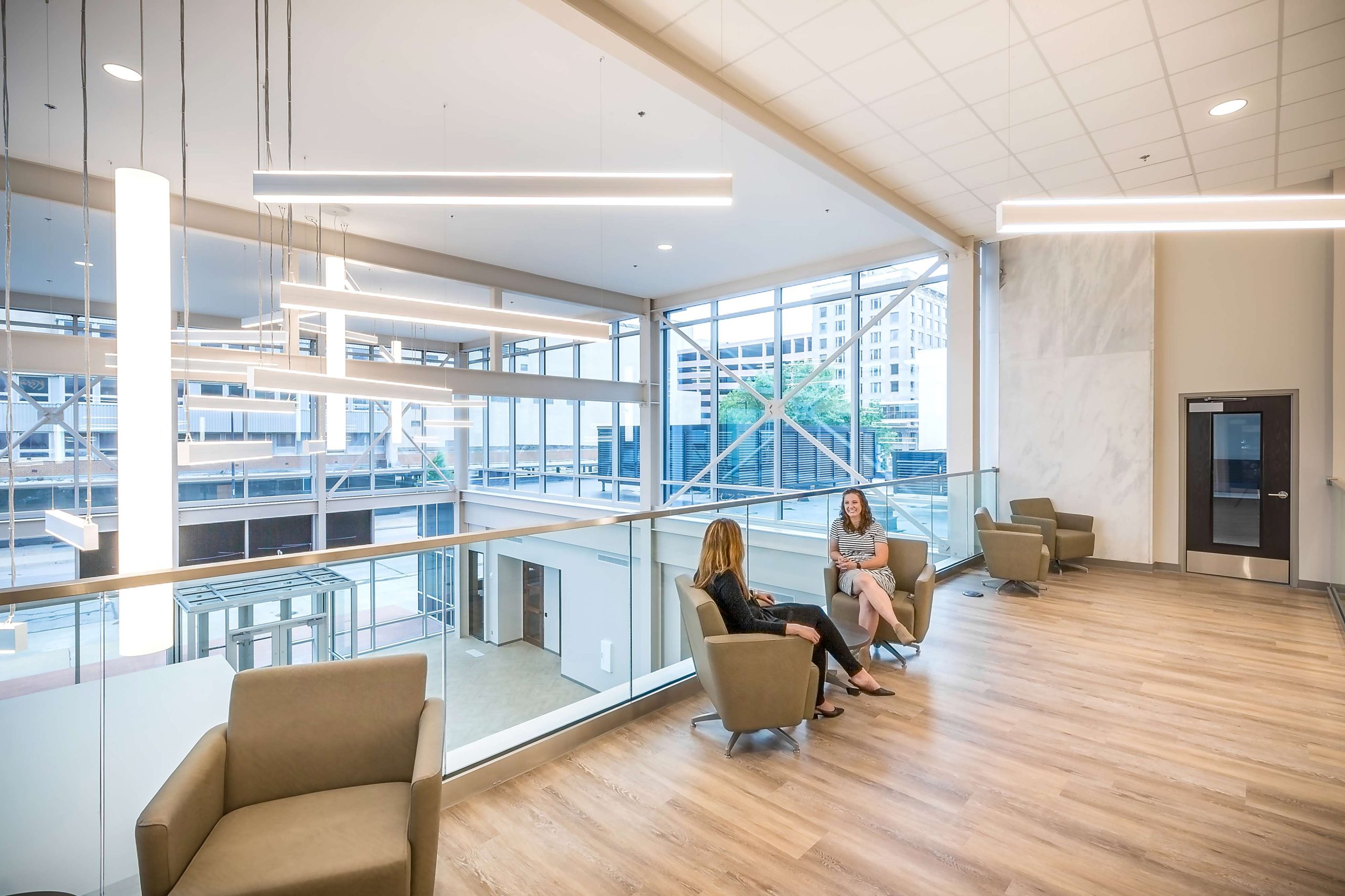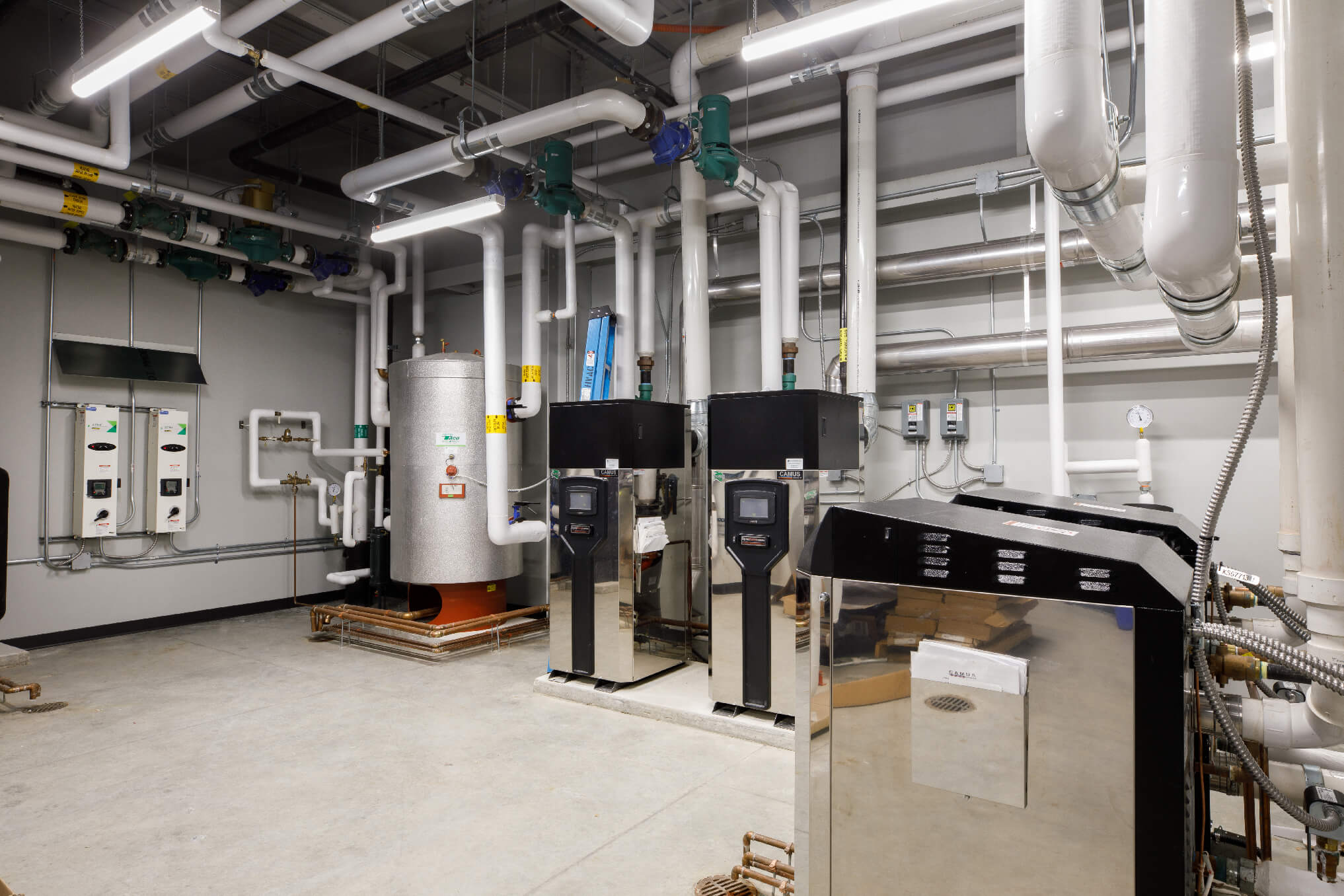
Architectural Engineering Brings Buildings to Life
August 21, 2023
Architectural engineering is kind of like the gryphon, a mythological creature with the body of a lion and the head of a bird, usually an eagle. While it may sound odd, the etchings and drawings we have of gryphons show a graceful, majestic creature whose disparate body parts work together to form a regal animal.
While not a creature from mythology, MKEC’s architectural engineering group resembles the gryphon in that it is a mash-up of different engineering disciplines that work together to create a cohesive unit.
What is architectural engineering?
Unlike the gryphon, architectural engineering is a very real discipline that focuses on all the engineering that goes into creating a building.
“We are responsible for everything that happens from 5 feet outside the building to the interior of the building,” said Neil Satrom, structural engineer for MKEC. “A lot of our work is partnering with architects. They’ve got a building they’re designing, and it requires engineering support.”
The architectural engineering group at MKEC is made up of engineers who deal with mechanical, plumbing, electrical, and structural issues. Architectural engineering projects generally begin with a request for a proposal from an architect, and once the architect chooses MKEC, the real work begins.
The importance of coordination
“Often whenever architects reach out to us, they already have a schematic floor plan set up,” Satrom said. “Most of the walls of the building are not moving anymore. That’s the stage where we get brought in. We need to lay out the structural systems. They generally have a good idea of columns and bearing walls. We provide extra support. In those early stages, we’re just trying to make sure we have enough space for all of the columns, beams, and walls. We figure out gravity loads – the weight of the building and the stuff in it then we focus on the lateral forces on the building, which may require bracing and shear walls.”
After the structural pieces are in place, the MEP engineers get involved, and at this stage, coordination is key.
“We have to pay attention to all the details,” said Richard Bartlett, senior project manager and mechanical engineer for MKEC. “Structural gets involved at the beginning. Mechanical and plumbing get involved as we see the bones of the building going in. We typically then are gathering information together, and it all kind of flows down to the electrical guys – all the lighting, all the plugs. If we aren’t efficient it can make it challenging for them. ”
The MKEC advantage
Coordinating everything that goes into a building can be challenging, but having an architectural engineering group under one umbrella makes that process a little easier.
Many firms do either structural or MEP, which means coordination has to happen across companies to finish a project, which can slow down the process and increase cost.
“We’re able to be a one-stop shop,” Satrom said. “In general, we work well with architects, contractors, and owners specifically to find economical solutions.”
Having everyone under one roof means less time spent waiting for answers when issues arise and less finger-pointing when something goes wrong.
“I think it makes us much more efficient because everyone is in the same building,” Satrom said. “There are fewer layers you have to get through. We have worked with each other enough that we know who can do what. Simple things like that make it more efficient. The other thing that’s really nice about having us all work together on the same project is our shared goal is to do well on the project. It’s MKEC’s scope that we’re concerned with.”

“I think it makes us much more efficient because everyone is in the same building. There are fewer layers you have to get through. We have worked with each other enough that we know who can do what. Simple things like that make it more efficient.”
Neil Satrom, Structural Engineer
One example of how the MKEC team works together was a recent boiler stack replacement at the 10-story Hillcrest Apartments in Wichita. Bartlett was tasked with replacing the existing boiler stack as rust and corrosion had made it no longer structurally safe.
“They have a unique steam system that’s not common for our area,” Bartlett said. “It was unique. Kind of fun. Kind of challenging.”
Bartlett realized the unique configuration of the boiler stack meant he was going to need some help, and he reached out to Satrom for some structural guidance.
“Richard brought me in to figure out how to remove the old stack and get a new one in,” Satrom said. “We were able to handle all of the different engineering needs that were involved in the project.”
That kind of coordination can even happen on projects where just one engineering discipline is in the mix.
“There’s lots of times when structural is hired and the MEP group isn’t on it, but a question comes up during the project where it would be helpful to talk to an MEP person,” Satrom said. “Just having those knowledge resources around to bounce questions off of makes our designs better and our projects go more smoothly.”
And that makes MKEC a favorite of architects.
“In the industry, a lot of firms, maybe they just do mechanical and plumbing,” Bartlett said. “The great thing about MKEC is we have all those services together. We don’t have to coordinate with people outside the firm. Architects like to work with us because we’re all together.”

“The great thing about MKEC is we have all those services together. We don’t have to coordinate with people outside the firm.
Richard Bartlett, Senior Project Manager, Mechanical Engineer
Respecting the client
Many of MKEC’s projects outside of the architectural engineering space focus on working with state and local governments, utility owners or industrial and energy clients. The architectural engineering group works with architects from firms of varying sizes with varying needs. Managing those distinct relationships is a big part of the job.
“We work with a wide variety of architects. Each one has a different style and personality. It’s our job to become familiar with them and know what things they find important,” said Satrom. “The challenges can come with managing all the people, expectations, deadlines, and changes.”
So, while MKEC’s architectural engineering group has yet to reach mythological status, it is helping to design structures that will stand long into the future. And that’s a legacy of its own.







